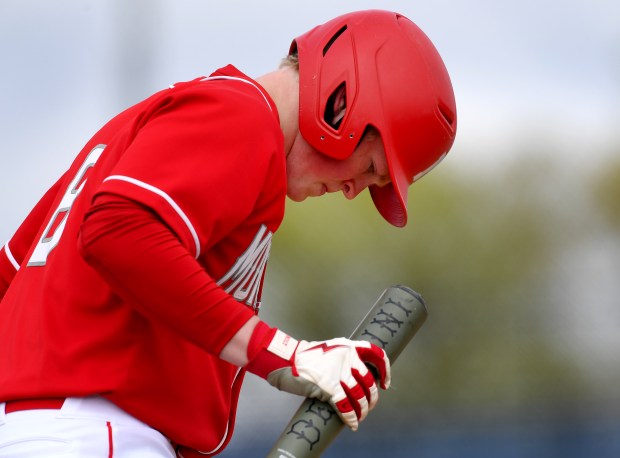It’s always a thrill to see a bald eagle in Illinois, and there was a time when the only place I could reliably find America’s symbol was by dressing in layers and driving several hours northwest to view them at locks and dams in winter.
Now I can see bald eagles even in spring and summer, close to my home in Lake County, and many are counted at annual Christmas Bird Counts across the state, including 938 in 1994 as opposed to only one in 1984. I started this new year watching four adult bald eagles with white heads and tails contrasted by dark brownish-black bodies, along with one immature that looked mostly mottled brown. They were perched in trees in a field.
The bald eagle is a true American comeback story, and that’s why it made sense for President Joe Biden to sign the bill that officially named the bald eagle as the National Bird of the United States on Dec. 24. With this official designation, we can celebrate an environmental success story, and also be reminded of what more needs to be done in the face of climate change.
Since 1782, the bald eagle has been a national emblem in the U.S., but it didn’t officially gain the title of national bird until this past Christmas Eve.
Watching these birds with a wingspan of 4.5 to 8 feet soaring and gliding above a lake or river in Illinois gives me a sense of awe and hope that we can save the natural world that is in jeopardy.
Bald eagle numbers plummeted in the 1950s because of habitat loss and overuse of pesticides, particularly DDT, which caused birds to lay eggs with thinner-than-normal shells. When the birds would incubate, they’d break their own eggs.
While we could still find some bald eagles wintering in Illinois along open rivers where food was available, the species stopped nesting in the Chicago area in 1900. The bird was placed on the federally endangered species list in 1978, meaning its breeding numbers throughout the U.S. were rapidly declining.
Protecting the birds’ habitat and limiting the use of DDT made a difference and in 2004, the first bald eagle nest in a century in the Chicago area was recorded at the Little Calumet River. Three years later, the bald eagle was removed from the federal threatened and endangered species list.
The nesting, wintering and migration habits of bald eagles can be complex. Immature bald eagles spend the first four years of their lives exploring many areas looking for food. They may fly hundreds of miles a day. Meanwhile, some of the adults that breed in Alaska may fly south for the winter.
In winter, it’s all about food. The bald eagle mostly eats fish, but also birds, mammals and roadkill. In winter, I’ve seen a bald eagle feasting on a dead skunk.
Bald eagles are not nesting in Illinois in January and February. Rather, the birds spend winters here because of food availability at various locks and dams, especially along the Mississippi River, as well as the Fox River closer to Chicago. They will begin nesting in the region in about March, while others wintering here will fly elsewhere to raise their young.
This spring, I’ll drive north toward Antioch to see if a pair of bald eagles are back in their nest. If I’m really lucky, I’ll see a pair of eagles courting in the air, flying high, then tumbling down, grasping one another’s talons before letting go to land on the ground.
As the climate changes, eagles may face new challenges. For example, in some areas more frequent droughts may threaten bodies of water that supply eagles with food. “If the area is becoming drier and if it affects its food resources, such as fish in river systems, then that’s going to be a big problem for the species,” says Brooke Bateman, senior scientist at the National Audubon Society. The Audubon Society predicts that three-quarters of the bald eagle’s current summer range will become unsuitable for the birds in about 60 years.
So here’s a nudge to get outdoors this January and February to go searching for bald eagles nearby. You don’t have to drive all the way to the locks and dams along the Mississippi River, although I’d highly recommend that if you’ve got a weekend to spare.
Bald eagle-watching events are held statewide in January and early February, with many near the Chicago area, including at Starved Rock State Park held this year on Jan. 25 and 26. Visit https://www.starvedrocklodge.com/event/eagle-watch-weekend/2025-01-25 for more information.
In Search of Bald Eagles, held in northern Illinois and southern Wisconsin for the past 21 years, will take place at 8 a.m. on Feb. 1 at the Prairieview Education Center in Crystal Lake. Registration is required for the free event. Visit https://hackmatacknwr.org/in-search-of-eagles-2025/ to register, and to view maps of nearby rivers where you might view bald eagles in winter on your own time.
Though I saw other bird species besides bald eagles on New Year’s Day, it was the United States national bird that gave me the most joy, especially knowing about its journey back from near extinction.
Sheryl DeVore has worked as a full-time and freelance reporter, editor and photographer for the Chicago Tribune and its subsidiaries. She’s the author of several books on nature and the environment. Send story ideas and thoughts to sheryldevorewriter@gmail.com.



